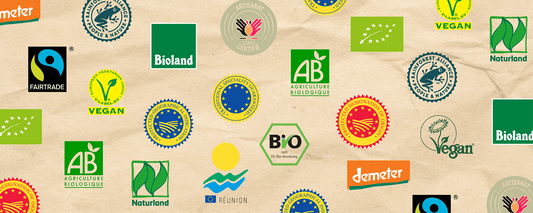Why Seasonal Eating Matters — and How to Make It Part of Everyday Life
Eating seasonally is one of the simplest ways to enjoy food at its best—full of flavor, rich in nutrients, and better for the planet. But what does it actually mean to eat seasonal food, and why should you make it a priority? In this guide, we’ll explore the benefits of eating seasonally, how it enhances your health, the superior taste of fresh ingredients, and why it’s a more sustainable choice. Plus, we’ll explore how seasonality differs across European regions and highlight incredible artisans who craft products in harmony with nature’s rhythm—available at Gourmie Goods.
What Does Eating Seasonally Mean?
Every plant, fruit, and vegetable has an optimal growing season, determined by its biological traits and environmental conditions. Factors such as temperature, daylight hours, and soil composition dictate when a crop naturally thrives and reaches peak ripeness, creating a limited window for optimal growth and harvest.
Eating seasonally means consuming foods that have been grown and harvested at their peak during a specific time of year in your region, in sync with their natural cycle, rather than being artificially forced to grow year-round.

Instead of relying on produce shipped from across the world or mass-produced—even locally—in industrial greenhouses, where crops are cultivated out of season in controlled environments, seasonal eating prioritizes what’s fresh, local, and naturally ripe. This approach enhances flavor and nutritional value, supports sustainable farming practices, and reduces reliance on artificial modifications such as excessive heating, lighting, and chemical interventions.
Health Benefits of Eating Seasonal Foods
1. More Nutrients, Better for Your Body
Fruits and vegetables lose nutrients over time, especially when they are transported long distances. Eating produce that’s in season means you’re consuming it at its peak freshness, maximizing vitamins, minerals, and antioxidants.
For example, freshly harvested spinach has significantly more vitamin C than spinach that has been stored for weeks in cold storage or transported from another continent.
2. Supports Gut Health
Seasonal foods naturally align with what your body needs throughout the year. In the colder months, hearty root vegetables and fermented foods support digestion and immunity, while summer fruits hydrate and provide natural sugars for energy.
3. Fewer Chemicals and Preservatives
Out-of-season produce is often grown in artificial conditions, using pesticides, preservatives, and waxes to extend shelf life. Eating in-season, especially organic produce, reduces exposure to these additives, supporting a cleaner and more natural diet.
Taste: Seasonal Food - More Flavour for Less
1. Peak Freshness, Peak Flavor
Have you ever tasted a vine-ripened tomato in the summer versus one from the supermarket in winter? The difference is night and day. Seasonal food is allowed to ripen naturally, developing more intense flavors and a better texture—fully expressing its terroir. Produce grown in rich, healthy soil absorbs minerals and environmental influences that enhance its depth of flavor. In contrast, crops cultivated in controlled environments, such as hydroponic systems, often lack the same complexity and taste, even when grown in season.
2. Surplus Means Lower Prices
When food is in abundance, it is not only fresher but also more affordable. Seasonal produce is often available in surplus, which naturally drives prices down.

Because it is grown in optimal conditions, it does not require costly transportation, artificial ripening techniques, or energy-intensive greenhouse cultivation—making it both a better-tasting and more economical choice.
Sustainability: Why Seasonal Eating Is Better for the Planet
1. Reduces Food Miles and Carbon Footprint
Importing food from other countries requires extensive transportation, refrigeration, and packaging—all of which contribute to greenhouse gas emissions. A single shipment of fresh produce can travel thousands of kilometers, consuming fuel and generating pollution along the way.
By eating locally grown seasonal produce, you cut down on food miles, reduce reliance on energy-intensive storage, and support your local community of farmers and growers. Choosing food that is naturally in season minimizes the need for artificial heating, cooling, and long-haul distribution, making it a more sustainable choice for both the planet and your plate.
2. Encourages Sustainable Farming
Seasonal farming works in harmony with nature, allowing crops to grow under optimal conditions without excessive intervention. Farmers who follow natural cycles rely less on artificial fertilizers, pesticides, and energy-intensive irrigation, easing the environmental strain of industrial farming.
By choosing seasonal food, you’re supporting small-scale farmers and growers who prioritize soil health, biodiversity, and water conservation. These are the people keeping real, regenerative farming alive—without the shortcuts of industrial agriculture, ensuring that land remains fertile and productive for future generations.
3. Less Food Waste
Seasonal food is fresher, lasts longer, and is less likely to end up in the trash. Produce that’s harvested at its peak is naturally more resilient, meaning it doesn’t spoil as quickly as out-of-season alternatives that have traveled long distances.
Long supply chains often mean food spends weeks in transit, losing freshness before it even reaches the store. By the time it’s in your kitchen, it’s already at the end of its shelf life. Seasonal food, on the other hand, is harvested closer to home, giving you more time to enjoy it before it goes bad.
How to Start Eating Seasonally
1. Shop at Local Markets
Farmers' markets are the best place to find fresh, in-season fruits, berries, and vegetables straight from the source. Talking directly with farmers lets you discover what’s at its peak, explore unique varieties, and even get tips on the best ways to cook and enjoy seasonal produce.

2. Shop from Artisan Producers
Small, independent producers and food artisans are masters of preserving seasonal produce, transforming it into products that can be enjoyed year-round. Through techniques like fermentation, curing, or traditional preservation, they ensure flavors remain as vibrant as the day of harvest—if not even more complex and refined over time. Whether it’s freshly pressed olive oil, tomato sauce from sun-ripened tomatoes, or hot sauces made with locally grown, organic peppers, these artisans prioritize quality, tradition, and seasonality.
Discover selected products from Europe's best artisan manufacturers at Gourmie Goods.
3. Cook with What’s in the Season and Artisan Products
Let the season guide your cooking and spark creativity in the kitchen. When fresh, local produce meets artisan products crafted by small makers, the possibilities for incredible meals are endless. The key is to keep your pantry stocked with high-quality essentials—so you can effortlessly cook with whatever produce comes into season. With this approach, every meal feels fresh, vibrant, and naturally delicious.
4. Preserve Seasonal Goodness for Later
One of the best ways to eat seasonally year-round is by preserving peak-season produce. For generations, people have used canning, fermenting, drying, and making jams, pickles, and preserves to extend the life of seasonal abundance. These time-honored techniques capture nature’s best flavors at their peak, allowing you to enjoy them long after harvest.
Turn sun-ripened summer tomatoes into rich passata, transform orchard fruits into fragrant jams, or ferment crisp vegetables to savor in the colder months. Preserving not only extends the shelf life and enjoyment of seasonal food but also reduces waste and keeps traditional flavors on your table year-round.
Seasonal Fruits and Vegetables Across Europe
One of the most fascinating aspects of eating seasonally is how each season brings new flavors and ingredients, creating a natural rhythm in what we eat. Just as one harvest ends, another begins, offering fresh opportunities to enjoy nature’s best produce.
Even more exciting is that seasonality varies across countries—meaning that when traveling, you can explore what’s fresh and in season in different regions. A winter trip to Italy might bring the best citrus fruits, while a summer visit to Sweden offers an abundance of wild berries.
If you’re curious about what’s in season each month, the European Food Information Council (EUFIC) offers an interactive online map to explore seasonal produce across Europe. Here’s a look at how the seasons shape local produce in different European regions:

Spring in Germany
This season brings tender white asparagus, wild garlic, and the first strawberries. Leafy greens like lamb’s lettuce, as well as fresh radishes and peas, thrive in the mild temperatures.
Summer in Sweden
Long daylight hours bring an abundance of berries, including wild blueberries, lingonberries, and cloudberries, which are foraged in forests. New potatoes, peas, and crisp cucumbers thrive in the cool summer air, while fresh dill is widely used in seasonal Swedish dishes. Strawberries, harvested in midsummer, are a highlight of traditional celebrations.
Autumn in France
A time for pumpkins, chestnuts, and orchard apples. Forest mushrooms like chanterelles and porcini are foraged in abundance, while vineyards across the country harvest grapes for winemaking.

Winter in Southern Italy
Citrus fruits reach peak ripeness, with oranges, clementines, and lemons dominating local markets. These fruits are rich in vitamin C and help brighten winter dishes with their vibrant flavors.
For centuries, before the industrialization of food, people naturally ate with the seasons, adapting their diets to what was locally available. By embracing this way of eating, you reconnect with nature’s cycles, enjoy fresher and more flavorful ingredients, and support a more sustainable food system.
Eating Seasonally with Artisan Products
Shopping at farmers' markets or growing your own garden is the best way to enjoy fresh, local, and seasonal food. But relying solely on fresh produce isn’t always practical or convenient. That’s where high-quality, preserved seasonal foods come in—your essential kitchen staples like quality oils, sauces, sea salt, and pickles that elevate farmers' market produce into something extraordinary.
At Gourmie Goods, we carefully select artisan producers who honor the natural rhythm of the seasons, using only the finest ingredients harvested at their peak—available only as long as stocks last. Here are a few examples that embody the essence of seasonal eating:
Picual Extra Virgin Olive Oil from SOLO Aceite
A single-variety extra virgin olive oil from centuries-old Picual trees in Los Capachos, Jaén, Spain. Manually harvested in October and cold-pressed the same day, it reflects the region’s terroir and deep olive-growing tradition. With a vibrant green color and intense fruitiness, it offers fresh notes of grass, artichoke, and olive leaf.

It’s an exceptionally flavorful olive oil, perfect for enjoying year-round—drizzle over summer salads, autumn roasted vegetables, or winter greens for a taste of the harvest in every season. Limited to just 2,000 bottles.
Datterino Giallo Yellow Tomato Sauce from Materia
Made in small batches in Puglia, Italy, this sauce contains just two ingredients—whole yellow Datterini tomatoes and their own fine juice. With a naturally high sugar content and low acidity, these tomatoes create a perfect balance of sweetness, tanginess, and subtle savory depth.

Harvested at peak ripeness from July through September, it’s an Italian summer captured in a jar—use it year-round for pasta, pizza, or to elevate specific seasonal dishes.
Fleur de Sel de Guérande Sea Salt from Artisans du Sel
Hand-harvested from the ancient salt marshes of Guérande, Brittany, this gold-standard sea salt is prized by chefs and food lovers worldwide. Naturally crystallized by the sun and wind, it is collected by hand during the harvest season from May to September and dried naturally for two years.

With its delicate white crystals, pure mineral richness, and Protected Geographical Indication (PGI) status, it adds the perfect finishing touch to both savory and sweet dishes throughout the year.
Styrian Pumpkin Seed Oil Fanika from Babica
Rich, nutty, and deeply flavorful, this Styrian Pumpkin Seed Oil is made from 100% roasted Styrian Prekmurje pumpkin seeds from Slovenia (PGI). Harvested between mid-September and mid-October, these pumpkins yield an oil packed with omega fatty acids, vitamins, and antioxidants, offering both depth of flavor and nutritional benefits.

Its bold, earthy taste makes it a versatile staple—drizzle over autumn salads, roasted vegetables, or even ice cream for a unique touch year-round.
These handcrafted products celebrate the best that each season has to offer, bringing authentic, high-quality ingredients straight to your kitchen.
Explore our handpicked selection of seasonal artisan products at Gourmie Goods and experience the true taste of nature’s best.
Conclusion: Eat Seasonally, Eat Better
Eating seasonally is a simple but powerful choice. It enhances your health, delivers better-tasting food, and supports a more sustainable food system. Whether you’re looking for more nutrients, richer flavors, or a way to reduce your environmental impact, seasonal eating is the answer. Start eating seasonally today—choose fresh, in-season ingredients and experience the difference in every meal.

About author
Baiba Soika
Food writer and Co-founder of Gourmie Goods, Baiba is dedicated to putting good food at the center of modern living, believing food is the foundation of a successful life. With a background in international trade, design, and technology, she brings a unique, multifaceted approach to food industry. When not sourcing products or exploring new brands and trends, you'll find her somewhere near the sea, on the badminton court, doing sudoku, or in the kitchen, crafting simple yet flavorful dishes. Based in Düsseldorf, Germany.





